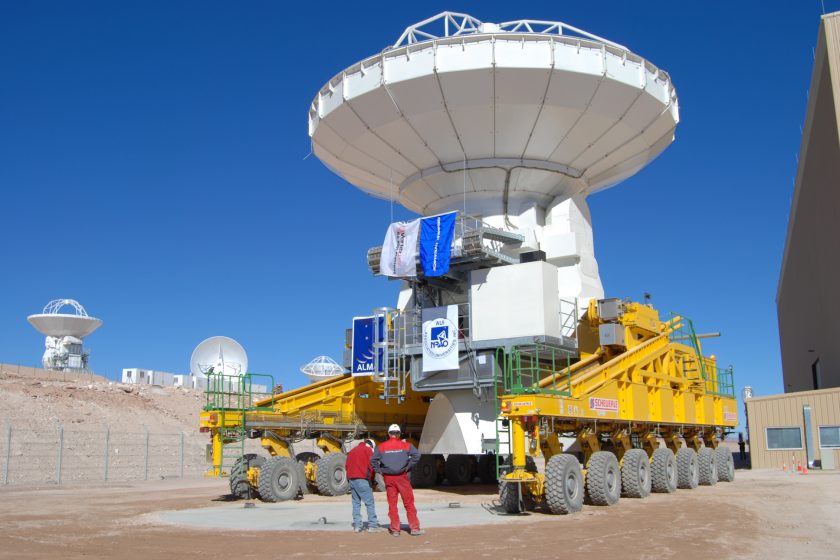It is the biggest radio telescope array in the world, 66 massive dishes pointing into the sky and tracking stars that are so far distant the mind boggles…BUT you can’t see any stars, nor are you guaranteed to see any telescopes either!
You visit in the middle of the day hence you don’t see any stars, plus the antenna dishes don’t collect visual images anyway. Also you don’t get to see the collection of 66 dishes that make up the largest array of its kind in the world as the Chileans are worried that people would die during the visit as the array is located at 5000 meters (16,400 feet) above sea level. However the tour of the operations base is still a very popular one and reservations have to be made weeks in advance.
San Pedro de Atacama is famous in Chile and internationally for its spectacular desert landscapes, beautiful salt lakes and outdoor adventure and the town forms part of the high desert triangle with Uyuni, Bolivia and Salta, Argentina. Adding the ALMA observatory tour enhances your time in the high desert in our opinion. There is some great information in the Wikipedia link below for those interested in the more technical details but we can give you an overview of the guided tour here.
https://en.wikipedia.org/wiki/
You board a bus at a pre-arranged meeting point in the small town of San Pedro at 9am for the 35 or 40 minute drive to the observatory base found a 2900 meters above sea level. You are dropped back at the same point in San Pedro around 1pm so you can fit in other tours in the afternoon. The ALMA tours only run on Saturdays and Sundays, and those people who don’t sign up well in advance can try to just turn up on the day to see if there is space, and there sometimes will be.
The telescope array at 5000 meters is run, monitored and maintained from this operations center. Every so often a telescope or two are transported down to base camp from the array for maintenance and calibration. This is a very slow speed journey taking (7 hours for 30 km) on one of the huge yellow vehicles you see in the photos. The day we visited there was indeed one being worked on, but even if there isn’t the visit is still very interesting indeed. As well as a superb explanation of how the telescopes work and their objectives you also get an overview of where and how people live on their 8 day shifts, see the control center complete with a “Big Bang Theory” whiteboard!!!, the electrical workshops and the calibration area where the telescopes are worked on.
Check out Gary´s photos below (plus 1 photo has been taken from their website you might notice):

